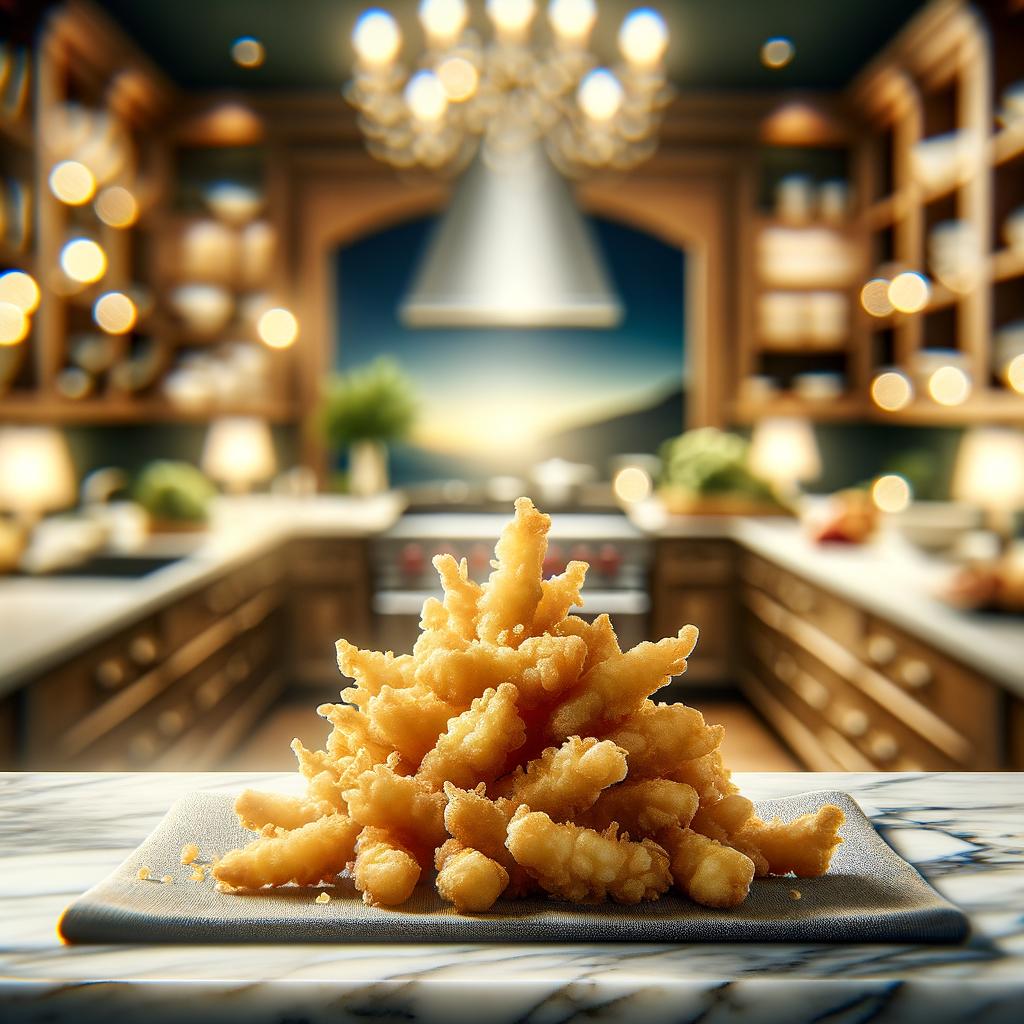Tempura

Description
Tempura is a delightful ingredient that has been a staple in Japanese cuisine for centuries. It is a method of battering and deep frying food items, most commonly seafood and vegetables. The batter, light and airy, is made from cold water, flour, and sometimes egg, resulting in a crisp, delicate shell that encapsulates the food item. The flavor profile of tempura is subtle, allowing the natural flavors of the food being fried to shine through, while adding a pleasing crunchy texture. The unique characteristic of tempura is its lightness, differing from many other deep-fried foods that are often heavy and greasy.
Primary Uses
Tempura is primarily used in Japanese cuisine, but its popularity has spread worldwide. It can be served as a main course, side dish, or even as a garnish. In Japan, it is often served in a donburi style, with the tempura laid over a bowl of steaming rice and drizzled with a savory sauce. It also appears in sushi rolls, udon noodle dishes, and as a standalone dish accompanied by a dipping sauce. Outside culinary uses, tempura holds cultural significance in Japan, being a traditional dish in celebrations and feasts.
History
Tempura has a fascinating history, tracing its origins back to the 16th century. It was introduced to Japan by Portuguese Jesuit missionaries, and the term "tempura" derives from the Latin word "tempora", referring to "The Ember Days" when Catholics refrained from eating meat. Over time, the Japanese adapted and perfected this cooking method, transforming it into the tempura we know today. Tempura's popularity has only grown over time, and it is now recognized and loved globally, a testament to the adaptability and appeal of this simple yet exquisite dish.
Nutritional Information
While tempura is a deep-fried food, its light batter and quick frying process reduce the amount of oil absorbed, making it a healthier alternative to many other fried foods. However, it should still be consumed in moderation due to its fat content. The nutritional value of tempura largely depends on the food being fried. For example, shrimp tempura provides a good source of protein, while vegetable tempura can contribute to your daily intake of vitamins and minerals. Tempura batter itself is low in nutrients, but it is also low in calories, making it a relatively guilt-free indulgence when enjoyed as part of a balanced diet.

